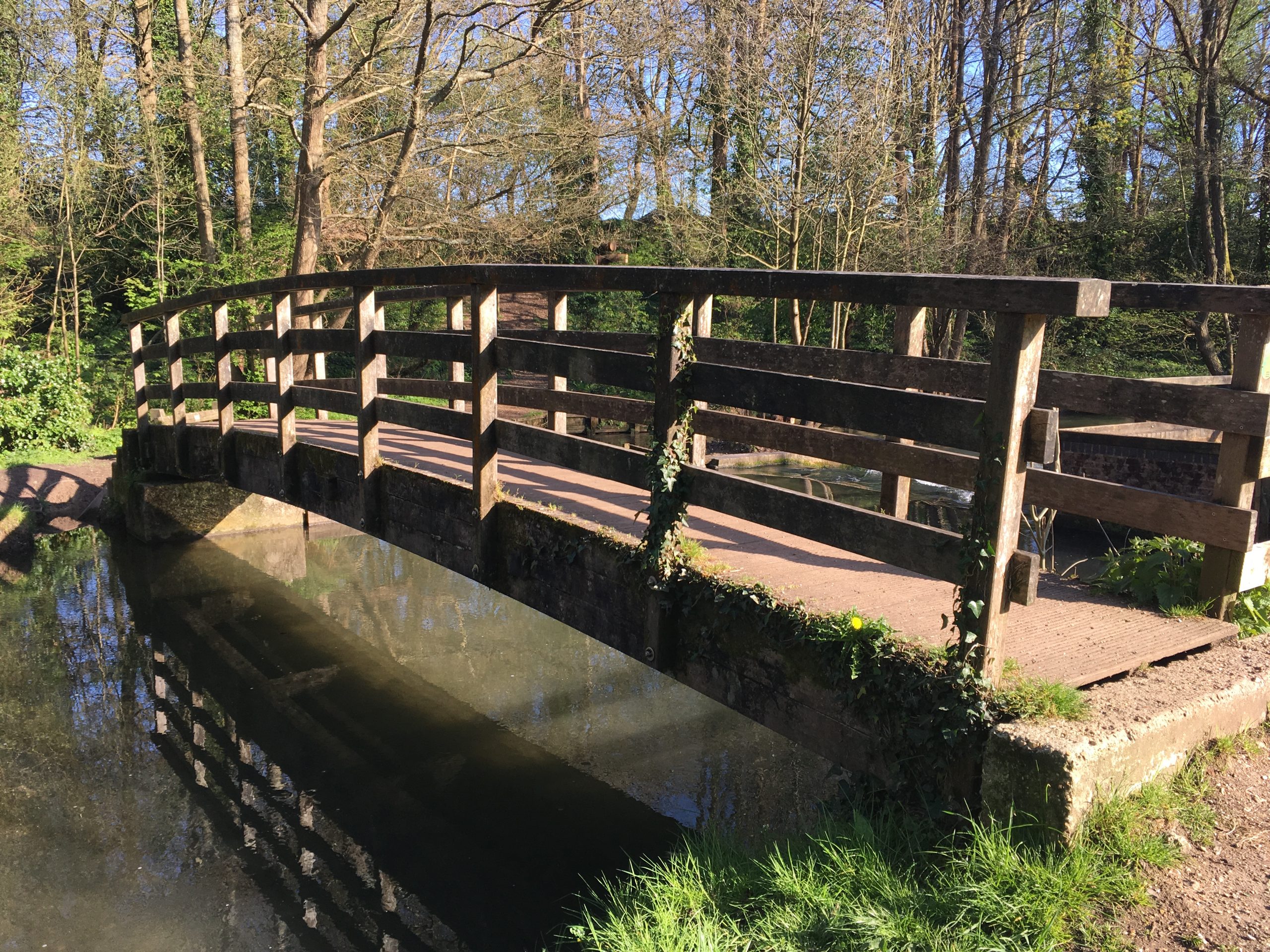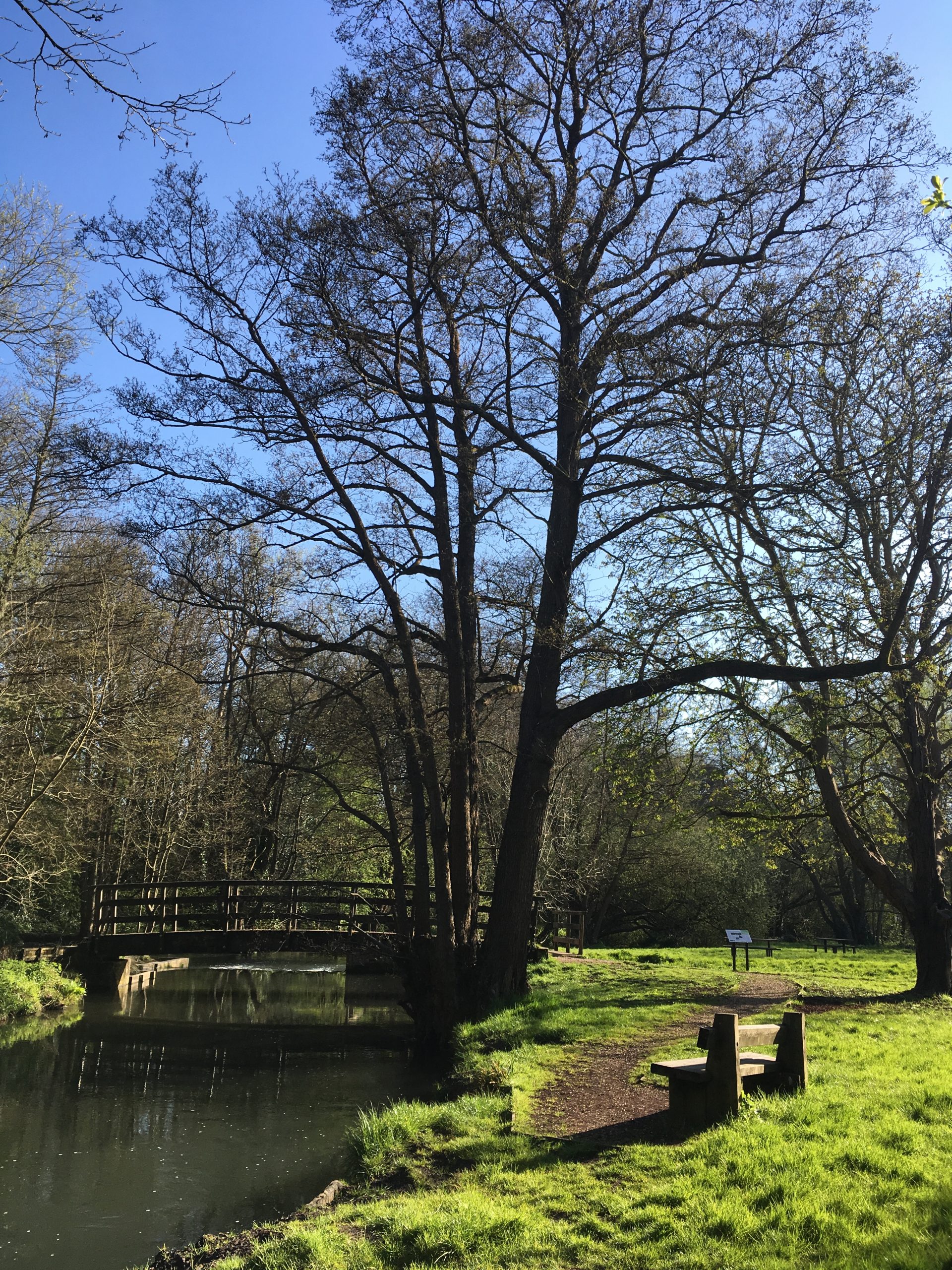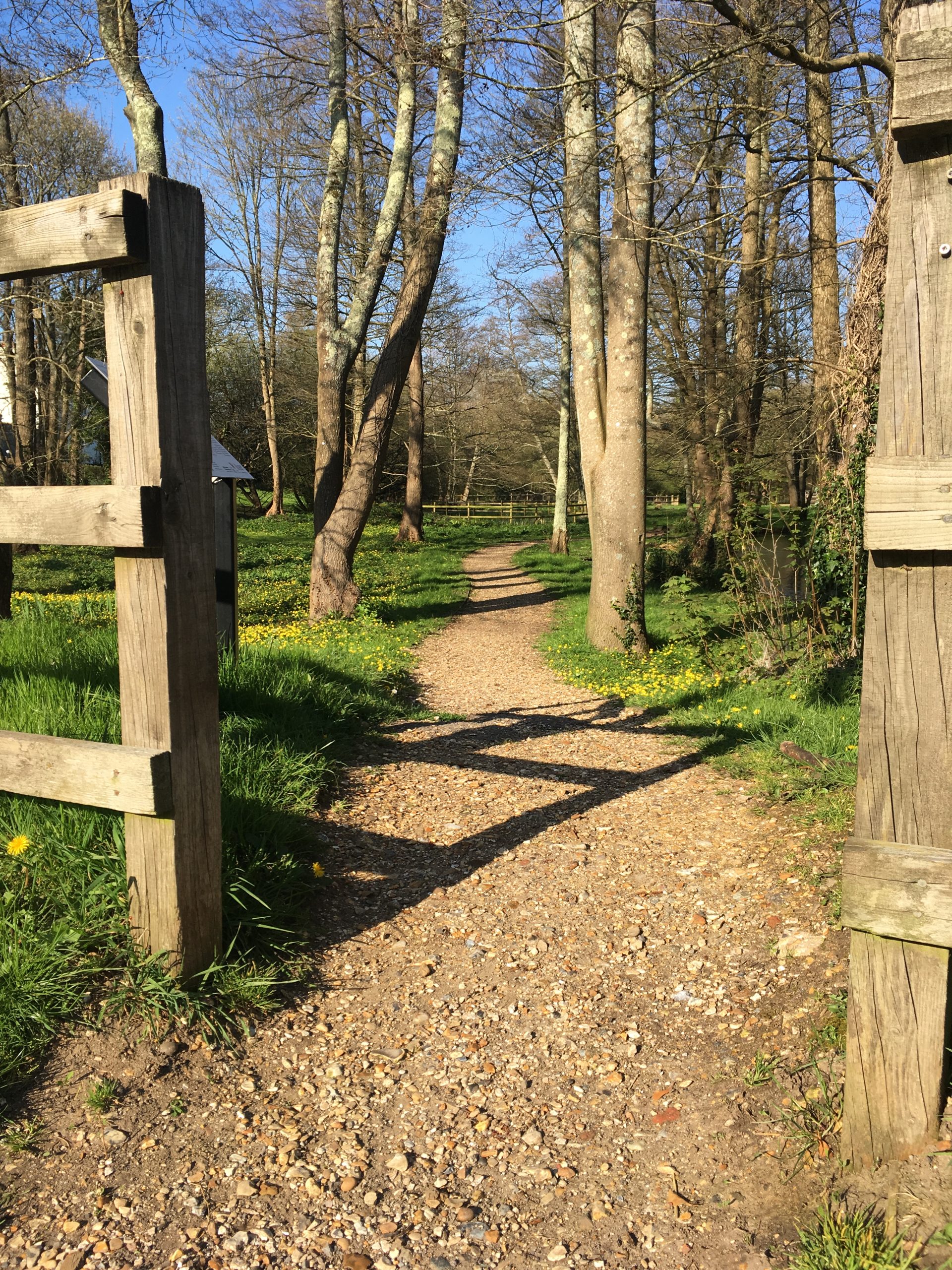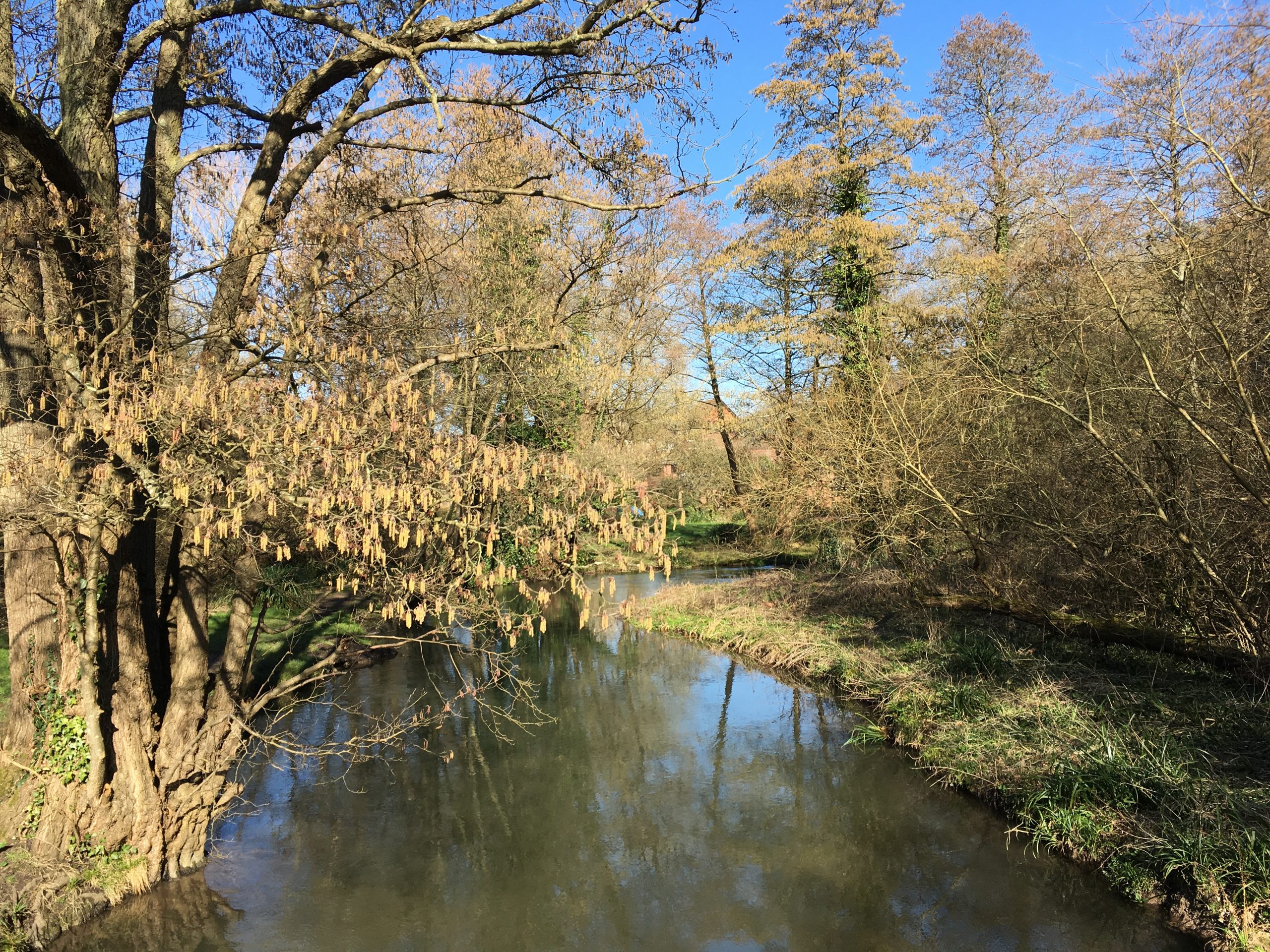The History of Wickham Water Meadows
Text from original by Mike Gosney What is a Water Meadow?
Water meadows have long been in existence in two basic forms: the earlier and naturally occuring those formed by the regular winter flooding of low ling land usually adjacet to a river; and those where river water is persuaded to flow through an area of land by means of a series of man made ridges and small ditches. Wickham’s Water Meadows are the natural variety.

Recent history of the Water Meadows.
The site had long been regarded by villagers as one which should be made available as a public open space when, in 1982, a Parish Appraisal elicited the response that “The great majority are in favour of the local authority acquiring this area should the opportunity arise”…, popular suggestions for its use being for walking, recreation and leisure, as an open space and park, and for picnicking. This view was later endorsed in the Winchester District’s Southern Parishes Plan of 1991 and then the District Plan of 1994. Then in 1996 ownership of the site changed, and the new owner approached the Parish Council to see if they would like to rent some of the Water Meadows for public use. The Parish Council responded positively, but as reclamation of the site was obviously going to be a major and expensive exercise, decided that if possible the site should be purchased outright.
In January 1997 the details became known of a scheme by which a grant of up to 50% of the cost of acquiring and developing a “Millennium Green” could be provided. The scheme, funded by the Millennium Commission and administered by the Countryside Agency, aimed at the creation of 250 “Millennium Greens” around the country. Naturally, there were stringent criteria which had to be met in order to qualify for a grant, but it was amazing how clearly these could be met in the case of Wickham’s Water Meadows. Among the criteria were that the green should have public support, be open to all, have easy local access, be a new area of green space, and have links to another green space or public right of way such as the old railway embankment. 1997 was therefore devoted to preparing first a Proposal, then a detailed Site Plan, and finally the formal Grant Application. The Application met with success on 17th December when an offer of a 50% grant was received. The Wickham Water Meadows Millennium Green Project was in being.
A fundamental condition of a grant was that the site should be owned and run by a registered charity, so in March 1998 the Wickham Water Meadows Millennium Green Trust was established with the Parish Council as the Corporate Trustee. The Site Plan was further defined (trees, fences, ground clearance, and bridges) in order to be able to invite tenders, and the legal process of purchasing the 5.7 acre site commenced. Completion of the purchase took place on Friday, 10th July, just in time for work on the trees to start the following Monday. Fences and ground clearance then followed that autumn.
As soon as ground conditions allowed, the abutments for the new bridge across the River Meon were built early in May 1999, the bridge itself being installed later that month. Timber edged gravel paths (made 8 inches deep because of the ground characteristics), steps up the old railway embankment, three picnic tables and six benches then followed, and the Environment Agency made some great improvements to the river, replacing the old hatches by a “ripple” effect with boulders. Although local people enjoyed the Meadows that summer (especially the youngsters who found they had access to the river as had their grandparents), the official opening did not occur until Sunday, 5th September. This was performed in glorious weather by the Mayor of Winchester who cut tapes across the new bridge over the River Meon. Those who had helped on the project were present as guests, together with about 100 villagers many of whom had brought a picnic with which to end the event.
In 2000 routine maintenance of the site began with regular cutting, by both volunteers and professionals, of the grass on the picnic area and at the sides of the paths. In September, the Trust acquired the Old Forge. This had always been in the plan as the building was becoming dilapidated and unsightly. If refurbished it would not only form a worthy entrance to the Water Meadows and remove an eyesore on entry to the village from the south, but it could well become a useful adjunct to the main purpose of the project, the Water Meadows themselves.
In the summer of 2001 the roof of the Old Forge was replaced by a smart new one, and plans laid for the refurbishment of the interior which included the addition of a small toilet block since almost any use to which the building was eventually put would call for this.
Early in 2002 a Planning Application was submitted and approved, water supply and disposal negotiated, and building in earnest started in August. Work was completed in September and a small local business took a three year lease with the Trust. This was a most appropriate use for the Old Forge as the income would directly support the primary object of the Trust by providing for the regular maintenance of “an open space to be known as ‘Wickham Water Meadows Millennium Green’ for the benefit of the Inhabitants and to be used forever as an area of informal recreation….” as the Trust Deed puts it. With this, the Water Meadows project was concluded.
Note from the webmaster
Without the work of Mike Gosney, assisted by Dick Warwick in the early days, this project would not have come to fruition. Mike worked tirelessly as Project Manager for the Water Meadows, taking on the Old Forge refurbishment as work on the Meadows reached completion. The Parish is very fortunate to have benefited from Mike’s commitment and management expertise.
The early history of Wickham’s Water Meadows.
Owned by the Lord of the Manor until the early part of the 20th century, from medieval times to World War II the site of some eight acres was used as a meadow for the grazing of cattle. Winter flooding by the River Meon rendered it unsuitable for other forms of cultivation but the flood water kept the frost out of the ground, allowing a much needed early spring growth of grass for the cattle. Since shortly after World War II the site has been left to nature as a sanctuary for wild life, becoming populated with trees and scrub, and covered with a thick blanket of stinging nettles, hog weed, and brambles.
Man has had two major impacts on the site. First, at some time prior to the mid 18th century, a subsidiary water course was dug to provide a flow of water to a man-made water meadows at Fontley, and possibly to improve the drainage from the village. Then in 1766 a set of hatches across the River Meon was constructed to enhance the effect of the side stream by forcing a greater flow of water along it when necessary.
Man’s second major impact came in the early twentieth century, when the railway embankment was constructed along the site’s south-eastern boundary.
The embankment, which today forms part of the Meon Valley bridle path, reduced the useable area of the Meadows, but despite this they were still used for grazing from time to time until the early 1960’s.




